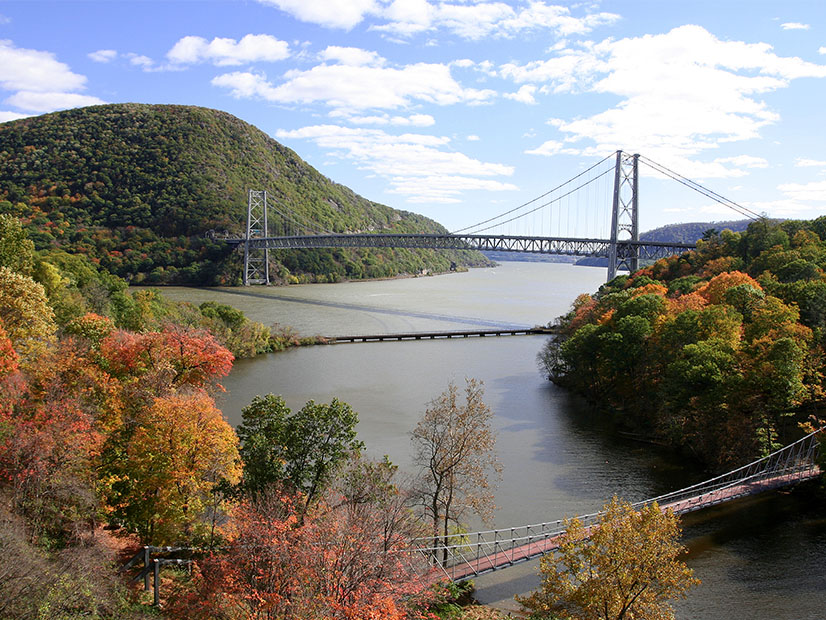
New York has selected two transmission line projects to help decarbonize power in New York City, Gov. Kathy Hochul said Monday during the opening ceremony of Climate Week NYC.
The state, she said, chose the Clean Path New York project and the Champlain Hudson Power Express project from among seven submitted to the Clean Energy Standard Tier 4 solicitation issued in January.
“New York’s communities are repeatedly facing serious consequences as a result of the devastation caused by the global climate crisis, and the stakes have never been higher as we deal with the economic and environmental destruction these extreme weather events leave behind,” Hochul said.
The Champlain Hudson line, developed by Transmission Developers Inc. and Hydro-Québec, is an underground and underwater transmission line that would run 339 miles between the Canada-U.S. border and New York City.
“This is a transformative moment for New York City’s fight against climate change,” New York City Mayor Bill de Blasio said in a statement.
The project’s opponents are concerned about the developers’ plan for the line to cut through the Hudson River. The cable would be laid along 200 miles in Lake Champlain and the Hudson River with a machine that uses high-powered water jets to blast away sediment to create a 7-foot-deep trench.
That process, according to the environmental organization Riverkeeper, could churn up legacy contaminants such as polychlorinated biphenyl, which were once used as dielectric and coolant fluids in machines and dumped into the Hudson by General Electric.
“I’m dismayed that New York state found a way to avoid caring for … the river when there are other solutions,” John Lipscomb, Riverkeeper’s patrol boat captain, told NetZero Insider.
New York is “checking the green box without looking at the details, and the details are important,” Lipscomb said.
Riverkeeper plans to meet with the New York State Energy Research and Development Authority (NYSERDA) next week about the final approval of the line.
Once finalized, NYSERDA will submit the negotiated contracts for the awarded projects to the Public Service Commission for consideration and approval. If the Tier 4 contracts are approved, NYSERDA payments will begin when the line has all required permits and local approvals, is constructed and delivers power to New York City.
Routing and environmental work is underway on the 174-mile Clean Path line, according to a statement from the developers, Forward Power, a joint venture of Invenergy and EnergyRe, and the New York Power Authority. The project route runs from Delaware County, in New York’s Southern Tier economic development region, through the Mid-Hudson region to New York City. A majority of the transmission line will be built on existing rights of ways already used by roads and transmission lines, the developers said.
The proposed Clean Path route, according to the developers’ application, also requires burying the line in the Hudson River.
Full operations are expected to begin in 2025 for Champlain Hudson and 2027 for Clean Path.

